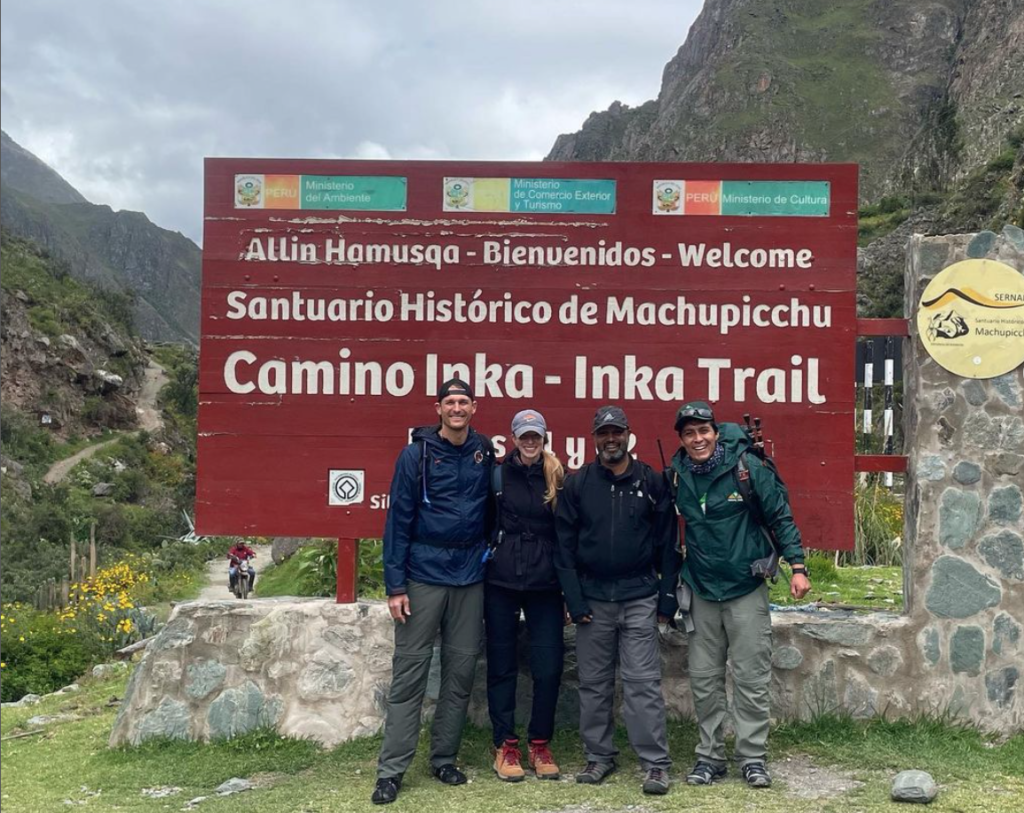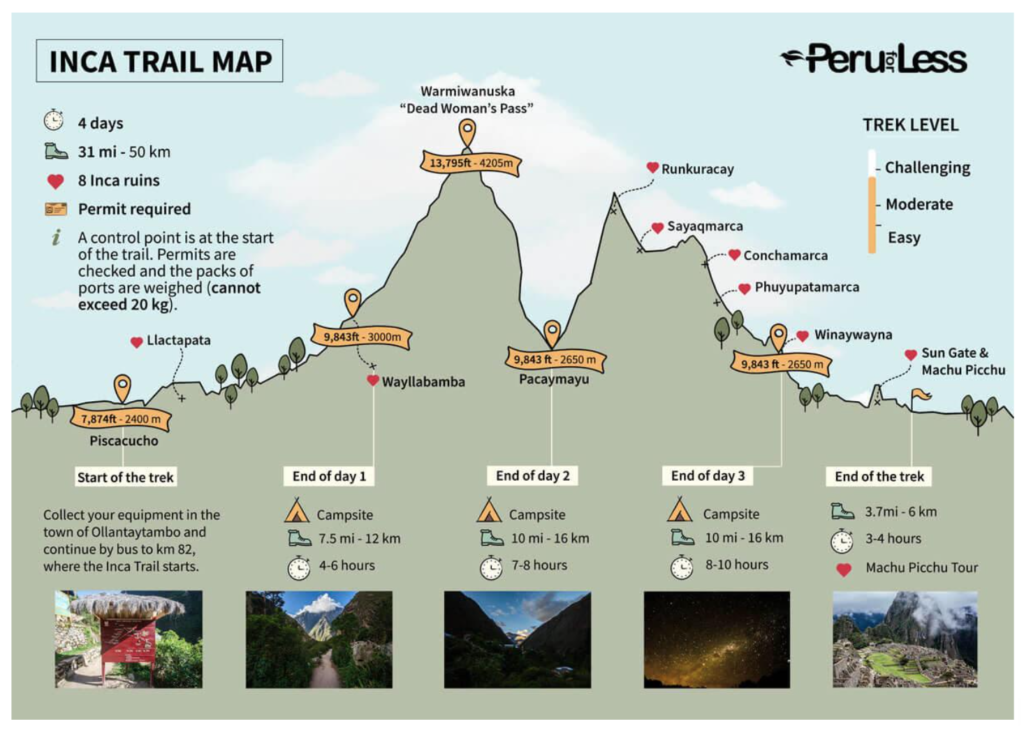
Training for Machu Picchu: Light, Consistent & Varied
Written by Fritz Nugent
There are infinite ways to train for any task, competition, or challenge. As a matter of fact, everything in life is infinitely trainable. This doesn’t mean that everything will work though. When deciding how to train for any endeavor, performing a needs analysis is an important first step. A needs analysis looks at everything that a specific competition, event, or situation will demand of the body and mind.
For a hike like the one I’m headed towards, it’s about 30 miles over 4 days, starting at 9,000 feet and peaking just shy of 14,000 feet at Dead Woman’s Pass, the legs and lungs are going to be maximally challenged. They only let you hike with 7 kg (about 15 lbs.), so I don’t need to be strong going into this. I need to be fit. I need to endure. My training is really minimal compared to how I would train when I was a young buck, and that’s ok. I’m only training about 3-4 hours a week. I think (hope) I’ll be fine. The only wildcard that I really don’t have the ability to directly train and adapt to is the altitude. Many hikers, even those who are “fit” fall victim to altitude sickness above 11,000 feet.

Years ago, I hiked San Gorgonio. The summit is 11,500 feet. I distinctly remember that the last 500 feet of elevation gain to be extremely challenging for me. This time around, to combat the lack of training at elevation, I have been adding in specific breathwork protocols a few days a week. In conjunction with the training outlined below, it seems to pack a powerful punch to increase cardiorespiratory endurance.
Here’s my weekly training schedule over the past three months, using rate of perceived exertion (RPE) to judge my efforts.:
Monday
RPE 5.0. I’m at the gym all day with a mid-afternoon break where I complete a short 20-30 minute sled, bike, yoke, and bodyweight leg training session.
Tuesday
RPE 8.5. This is my VO2 max day where I push my lungs to their edge. I have an AirDyne stationary bike at home, and I have been following a progression for the past few months of increasing volume with 30-60 seconds of work with my HR at 80-100%, with rest intervals of 1:1 to 1:3, meaning equal rest to work, all the way up to resting three times the work time. For example, I performed 9 rounds of 30-seconds bike at 85-95% max HR/output + 60 seconds of rest + 30 seconds max reps air squats + 60 seconds rest.
Since I’m nearing the tail-end of a long training block that is mostly focused on lactic threshold and VO2max training, my legs really don’t feel a “burn” anymore unless I push my heart rate towards 95% for over 40 seconds. Anything under 30 seconds is very doable even if I’m at maximum heart rate. It’s a pretty crazy feeling, actually, because for most of my life I have had “poor” cardio as I was primarily a sprinter for decades and trained with short bursts and very long rest intervals. Compared with the 1:1-1:3 work:rest, my previous training of 70-80 seconds is very different.
Wednesday
REST.
Thursday
RPE 7.0. This is my longer bike session, consisting of work bouts lasting 90 seconds to 3 minutes with resting between equal and half the work time. I try to keep my HR below 80% of maximum here, which is near the Maffetone target (an article on this in the future…). At first I disliked these intervals. I began with only two speeds – fast for a few intervals and then died, or very slow the entire time. Now I have earned the right to work at a medium speed and medium heart rate, and these training sessions leave me feeling better afterwards, providing a tonic effect. Sometimes I’ll hop in a group Motor class and will tweak the class workout to fit this aerobic loading structure.
Friday
REST
Saturday or Sunday
RPE 6.0-7.0. This is when I actually do the “thing”. Hiking. Mission trails is close enough, and has some elevation gain/loss to play on. I have gradually been adding weight to my pack and summiting 1-3 x 1000-foot peaks in an afternoon. I also like to run them sometimes to push my heart rate and leg muscular endurance. Running downhill is my absolute favorite because it completely clears your mind of past and future. You must be in the present. Even thinking to yourself “I have to concentrate on this particular step” may cause you to stumble. Instead of using your mind to think about running downhill, you must simply run downhill. I wear vibram toe shoes with a thin sole, and if you step on the wrong rock (or even the right rock the wrong way), it hurts, so I must be hyper-aware of where my feet are contacting the ground, and how. I may also get a second training session on this day, either before or after the hike. It’s usually a lighter day with lower back rehab tasks: KB suitcase or single-arm front racked carries, weighted side planks, easy step-ups, tendon strengthening isometrics for my elbow, and of course some unilateral hip muscle balancing that seems to really be helping my back. The last thing I want while hiking at elevation in the Peruvian Andes is for my back to go out. That would be the opposite of good.
Saturday or Sunday
REST. I could expand on breathwork training and new findings in the literature on oxygen deprivation and anti-aging and how I’m eating to fuel training for hiking and life, but for today I’m out of time.
